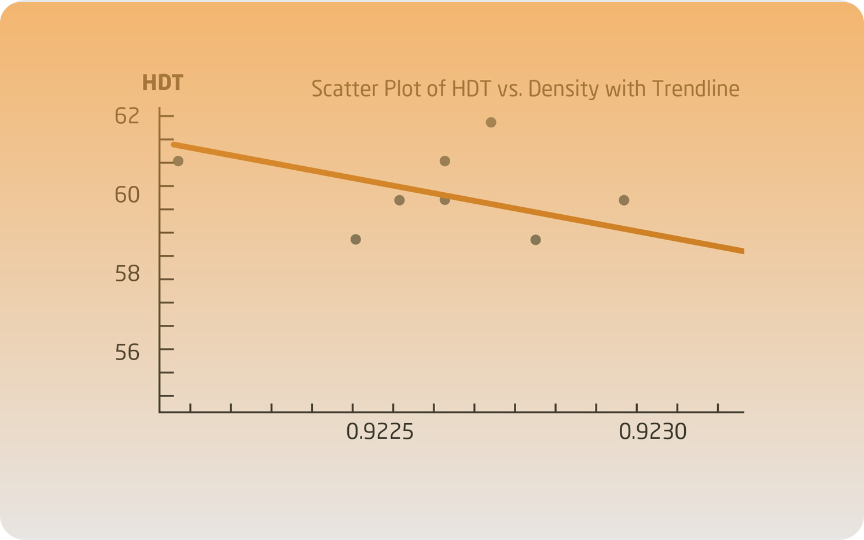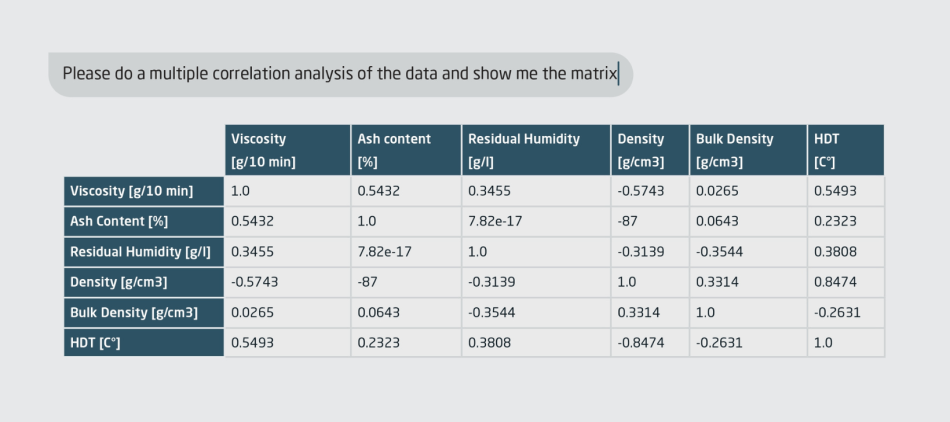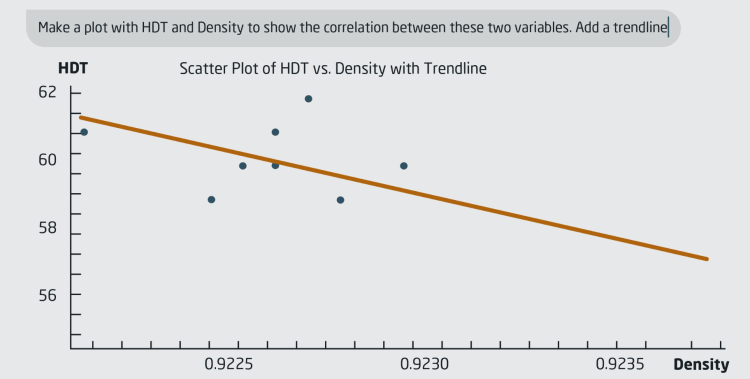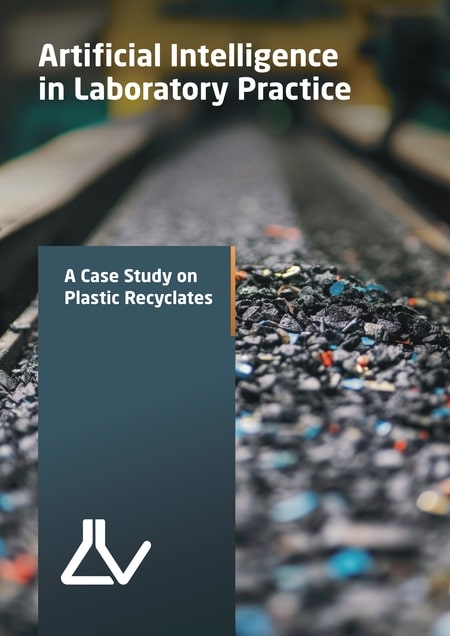LabV – The Data Management Platform
Blog
AI in the Laboratory – Part II
Artificial Intelligence in Laboratory Practice - Part II
From Complete Data to AI-Powered Insights

In this scenario, we show how an AI-powered digital assistent is able to handle large data sets. AI has the potential to support laboratories by conducting complex data analyses and finds correlation that would otherwise remain hidden.
Scenario 1: Fast Identification of Correlations with the Help of AI
Handling and analyzing vast amounts of data can be extremely challenging. Traditional methods, such as manual data entry and analysis in Excel, are often time-consuming and prone to human error. This scenario illustrates how AI can streamline these processes, making it easier to identify critical correlations and trends in complex datasets.
The Problem
The enormous amount of data that had to be collected and analyzed within the DIN specification for recyclates was a challenge for the laboratory. Uncovering correlations, anomalies, and relationships between different measurement parameters was too time-consuming and was avoided whenever possible.
The Solution
A single prompt with the query to the digital assistant was sufficient to perform an initial correlation analysis. A subsequent visualization was then possible at the touch of a button to evaluate the found correlations.

AI produced a table with all data points and correlations. A graph could also be produced quickly for a range of parameters in no time. The graph between HDT and density showed a correlation of approximately 0.8, which in statistical terms is not extremely high, as R values as close to one as possible are sought. However, the AI results from the data show that a higher density in a polymer means that its molecular network is better structured than lower density polymers. This highly structured network also means that these polymers are potentially more resistant to heat and possess a higher HDT, making them useful in high temperature applications.

The results of these prompts show that AI can analyze correlations that might otherwise be overlooked in different datasets. This can be achieved very quickly because there is no need for researchers to manually look through multiple paper documents and Excel spreadsheets looking for a specific correlation, and AI can perform rapid analyses using both the historical and present data. All this data — and the ability to perform a deep analysis — was obtained without any programming knowledge or expert knowledge of AI, as the prompts are sufficient to perform the intended function. While no technical expertise is required, for the AI analyses to be accurate, they require high quality data sets and a high degree of connectivity between data sets. This is paramount.
In the next upcoming blog post we will take a closer look at other prompts to compare the quality of several suppliers with AI prompts. Or just download our case study below.
AI in Laboratory Practice

Everyone is talking about artificial intelligence (AI). In this case study however, we show how AI can be used in the lab on a practical level.
Learn more in this case study:
- How AI-based solutions can integrate fragmented laboratory data into a cohesive system
- What AI can do in your lab to improve efficiency and to exploit all data
- Practical examples of how AI can streamline data analysis
- The benefits of an AI-powered data management platform in transforming laboratory operations, reducing errors, and saving time.
Download the case study now and discover what AI can do in your laboratory.
